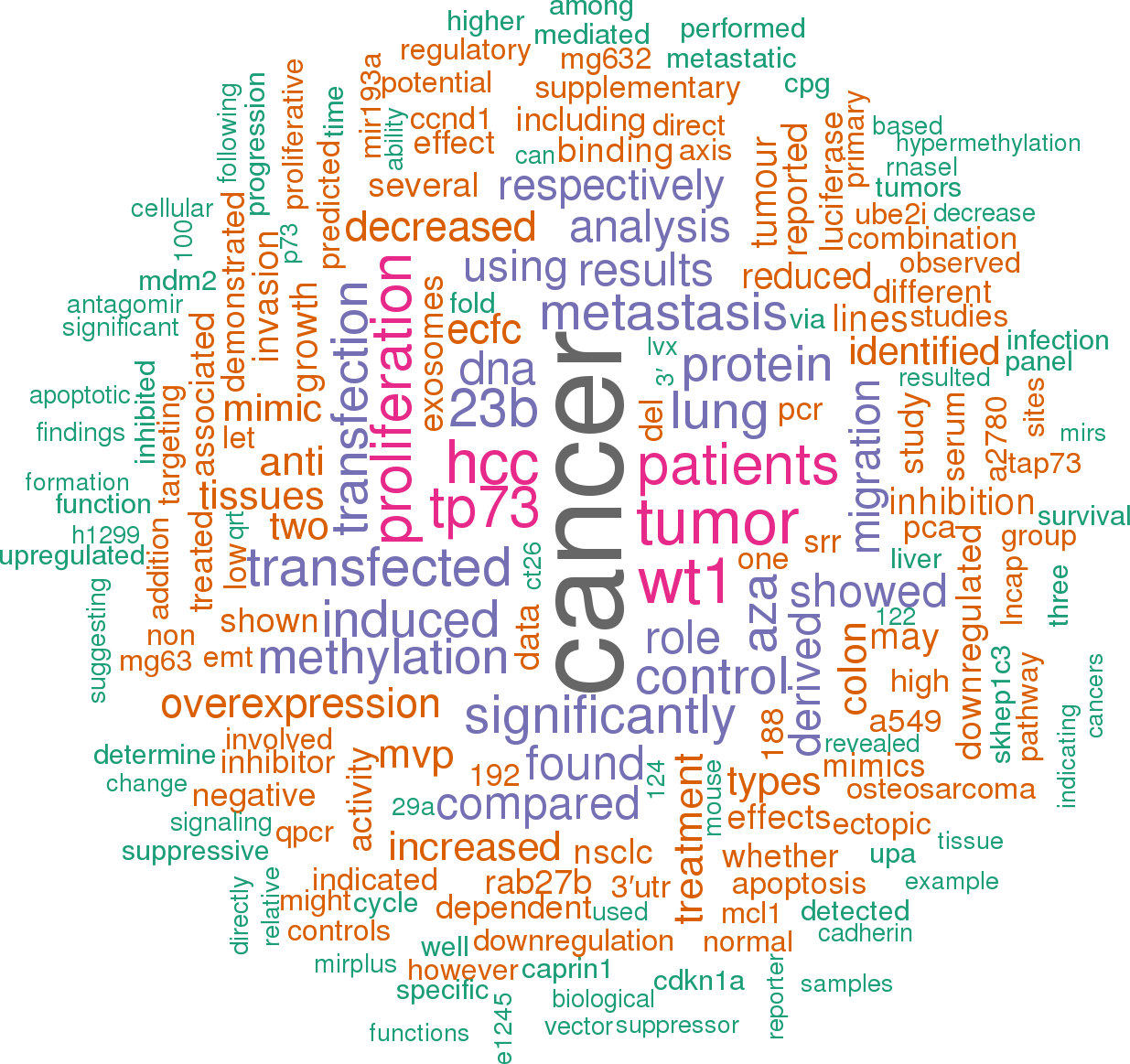Accession
MI0000487
Symbol
HGNC:
MIR193A
Description
Homo sapiens
hsa-mir-193a precursor miRNA mir-193
Gene
family?
family?
RF01895;
mir-193
Summary
Caution, this is an AI generated summary based on literature. This may have errors. ?
MIR193A, a microRNA, has been observed to be overexpressed in podocytes in primary FSGS biopsies, while genetic FSGS and minimal change disease show low MIR193A levels, similar to normal kidneys [PMC9953542]. Contrary to the suggestion of overexpression's regulatory interaction with VDR/RXR expression, the context actually suggests a causal relationship between VDR/RXR expression and downregulation of MIR193A [PMC7226544]. In vitro studies have demonstrated that MIR193A can inhibit micro-vessel formation, indicating its role in cellular processes [PMC9562882]. The expression levels of MIR193A by precursor progenitor cells are crucial for determining their differentiation into either parietal epithelial cells (PECs) or podocytes through the modulation of WT1 [PMC9953542]. The activity of MIR193A is influenced by its 3’ UTR position relative to the stop codon and the location of its seed region [PMC7226544]. In hepatocellular carcinoma (HCC), down-modulation of MIR193A has been associated with disease diagnosis and prognosis, and unlike miR-23b, it is not regulated by DNA methylation [PMC5351682]. Transcription factors such as YY1, WT1, and Sox2 have potential regulatory roles on MIR193A expression through binding to its promoter region [PMC7226544]. Advanced mouse colon cancer cells have been found to secrete exosomes containing MVP along with tumor-suppressive MIR193A [PMC7916137], and MIR193A is suggested to bind to the APOL1 3’ UTR region mRNA, affecting cytoskeletal organization in podocytes [PMC8391400; PMC7226544]..
Literature search

148 open access papers mention hsa-mir-193a
(1073 sentences)
(1073 sentences)
Sequence
88886
reads,
387
reads per million, 159 experiments
cgaggaugggagcugagggcUGGGUCUUUGCGGGCGAGAUGAgggugucggaucAACUGGCCUACAAAGUCCCAGUucucggcccccg
.......(((.(((((((((((((.(((((.((((.((.(((..........))).)).)))).))))).))))))))))))).))).
.......(((.(((((((((((((.(((((.((((.((.(((..........))).)).)))).))))).))))))))))))).))).
Structure
cgaggau a U C G A gggu
ggg gcugagggcUGGG CUUUG GGGC AG UGA g
||| ||||||||||||| ||||| |||| || |||
ccc cggcucuUGACCC GAAAC UCCG UC Acu u
------g c U A G A aggc
Annotation confidence
High
Do you think this miRNA is real?
Comments
This miRNA sequence is predicted based on homology to a verified miRNA from mouse [1], later verified in human [2].
Genome context
chr17: 31559996-31560083 [+]
Disease association
hsa-mir-193a is associated with one or more human diseases in the Human microRNA Disease Database
| Disease | Description | Category | PubMed ID |
|---|
Mature hsa-miR-193a-5p
| Accession | MIMAT0004614 |
| Description | Homo sapiens hsa-miR-193a-5p mature miRNA |
| Sequence | 21 - UGGGUCUUUGCGGGCGAGAUGA - 42 |
| Evidence |
experimental
cloned [2-3] |
| Database links |



|
| Predicted targets |



|
Mature hsa-miR-193a-3p
| Accession | MIMAT0000459 |
| Description | Homo sapiens hsa-miR-193a-3p mature miRNA |
| Sequence | 55 - AACUGGCCUACAAAGUCCCAGU - 76 |
| Evidence |
experimental
cloned [2-3] |
| Database links |



|
| Predicted targets |



|
References
|



